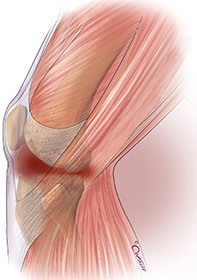Peer Reviewed
Rheumatology clinic
Haemophilic arthropathy: can it be prevented?
Abstract
Safe and effective replacement clotting factor concentrates are available for treating patients with haemophilia, but challenges remain in the management of haemophilic arthropathy. Primary prophylaxis with additional on-demand treatment offers the optimal management strategy for minimising long-term joint damage.
Key Points
Patients with haemophilia are characteristically at risk of spontaneous haemorrhage, and haemophilic arthropathy is the single major cause of morbidity.1,2 Recurrent haemarthrosis, which accounts for approximately 70 to 80% of bleeding episodes, is the predominant cause of chronic disability (Figure 1).3 Spontaneous bleeds also occur in muscle, soft tissue, other organs and the central nervous system but are less common. Despite the availability of safe and effective treatment for haemophilia, most commonly in the form of replacement clotting factor concentrates, the prevention and management of joint bleeds remain challenging.
Picture credit: © Chris Wikoff, 2016

